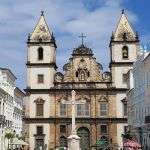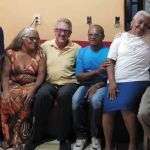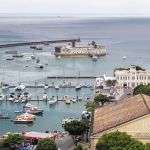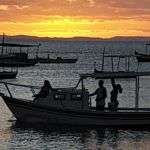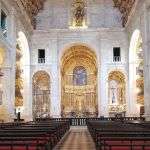
Culture and Heritage
September 2019 was very special as I had the opportunity and privilege to visit Brazil for the first time. In visiting a vast country like Brazil for a short time there is the real danger that one could do a real injustice to a country rich in culture and heritage.
During my first four days, I visited Rio de Janeiro, a city of 6.7 million people. In a real sense I was a tourist in Rio and did the touristy things by visiting the Metropolitan Cathedral of San Sebastian with its unique architectural design. It can seat five thousand people and can cater for 20,000 standing. I was also able to visit the famous statue of Christ the Redeemer. It draws huge numbers of tourists each day. It captivates locals and visitors in its monumental 124.6 feet of height. As I travelled to the summit by train and through the wooded vegetation I got wonderful glimpses of the city. Another of Rio’s great attractions is the Sugarloaf mountain and the centenarian cable car. In addition to the statue of Christ the Redeemer, Sugarloaf is one of the most sought after attractions for both locals and visitors. From both places one gets amazing panoramic views of Rio and beyond. I also had a four-hour guided walking tour of the Old City and its environs.
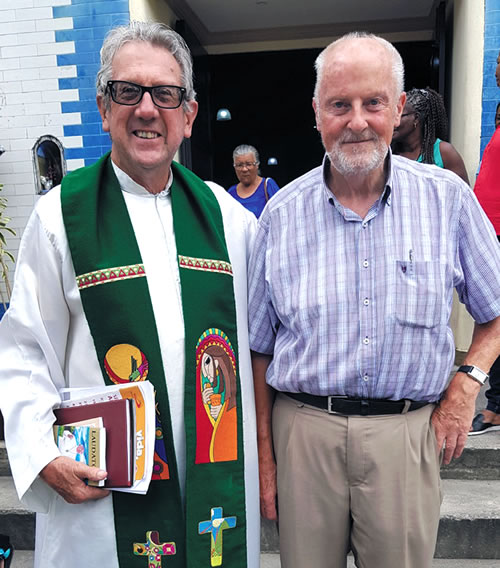
A Tour of the Iguacu Falls
Every country in the world has its own natural beauty and scenery, and Brazil is no exception. I was able to visit the Iguacu Falls from both Brazil and Argentine. It was a marvelous experience. It was a happy coincidence that my visit to the Falls coincided with the month of Creation. The Falls are a place of real beauty. Sadly, while experiencing such beauty there was very little mention of the devastating fires in the Amazon. One of the tour guides was very apologetic for the blockage of information on the fires and said that people have had to depend on international news to get the real picture. Being on my own did have its advantages as I was able to meet with some very interesting people from different parts of the world. I met one couple, Michael and Marguerita, from Bulgaria. He is an engineer and now lives in Kansas City. They told me how oppressive life was under the Communist rule, and they were both in their early forties before they were able to leave the totalitarian regime to start a new life for themselves and their family in the U.S.A.
Salvador
The main purpose of my trip to Brazil was to link up with and spend some time with my friend and fellow Columban, Fr. Colin McLean, originally from Melbourne, Australia. We were both assigned to the Philippines many years ago after ordination. It was so good to catch up with him after so many years and have the opportunity to spend quality time with him. He is the only Columban left in Brazil after the Columban group sadly had to leave in 1999. He has certainly kept the name and priorities of Columban mission very much to the forefront in his 34 years in the Archdiocese of Salvador. It was in Salvador that the Columbans opened a new mission in 1985.
Salvador, a major port, was the first official capital of Brazil. It was to Salvador that slaves were brought to Brazil from Africa by the Portuguese over a period of 350 years. Brazil was the last country in the world to officially abolish slavery in 1888. It has the highest percentage of people of African descent. It is estimated that Brazil received forty percent of enslaved Africans. While slavery has been officially abolished it still exists today in Brazil as it does in so many other countries but in more subtle, devious and oppressive forms.
A Visit with Antonio Cabral
During my stay in Salvador, together with Fr. Colin, I visited the home of his friend Antonio Cabral, his family and members of the community. It was very interesting and enlightening to listen to Antonio share his deep insights into Afro Brazilian religion. Antonio explained the meaning of Candomble in Brazil, which is the name given to a variety of African religious traditions established in Brazil during the nineteenth century. It has been continually nourished by its contacts with Africa, and its priests and priestesses have been dedicated to maintaining the purity of its African roots. The city of Salvador da Bahia is famous for its disciplined fidelity to the ways of the “old Africans,” and it is from here that the models for Afro- Brazilian religions radiate. By word, rhythm and gesture, Candomble seeks to incarnate the ancestors, forging the link between the royal powers of Africa and their children in Brazil. Candomble spirituality is shaped by the legacy of the slave trade.
Candomble is at once a space, a dance, and a community. It is a consecrated, privately owned area within the environs of Bahia, often walled or hedged where ceremonies to the spirits take place. It may be a large compound of many acres containing numerous shrines and sacred sites, or a simple building and yard screened from a city street as is the case of Antonio’s house and community. This was all very new to me.
Fr. Colin’s Invaluable Insights
Having Fr. Colin as my guide was invaluable. From his many years in Brazil he shared with me some very valuable insights into Brazilian culture and religion. He sees the value of using theater, Afro drama and circus arts as integral to his life as a Columban missionary and as vehicles for social change.
Fr. Colin lives in a poor neighborhood on the outskirts of Salvador. His home is only a short walking distance from the beach which is extremely beautiful, particularly at sunset. Sadly, due to pollution, swimming is not encouraged. Fr. Colin is the founder of a non-government organization (NGO) called Scene One, dedicated to presentations that highlight social injustices especially in the reality of Afro and indigenous Brazilians. During my visit I had the pleasure of visiting Scene One theater where I met some of the artists in various rehearsals, one of which included a drama centered on the Gospel story of the beggar and the leper and the lack of response from representatives of the Church who turned a blind eye to the harsh reality of life for so many people living in poverty. Drama is a very good vehicle for creating awareness of the situation in which so many people find themselves today. With Fr. Colin, I also attended a performance by Bale Folclorico Da Bahia, a professional dance company in Brazil who outlined some of the most important expressions of the Bahian folklore through some dances of the Candomble, African religion in which music and dance are the main factors.
The Many Faces of Salvador
Salvador, like many other big cities, is a city of great contrasts. There is the very wealthy section looking out onto the Atlantic Ocean. The ocean plays a big part in the lives of the people. Added to the beauty of the ocean are imagined scenes of indescribable horror and suffering of the “middle passage,” as the Atlantic crossing was often called during the 350 years of the slave trade. There are many hills dotted all around where many of the poor live, some very precariously. There are many beautiful, ornate Churches and narrow cobbled streets. It is said that Salvador has 365 churches, one for every day of the year. One such church is the Church of St. Francis which is one of the best models of the first stage of the Barque style or as it is usually called “the colonial style.” It is located opposite the Cathedral. It was in this area where many of the slaves from Africa were beaten and tortured.
One can only look in awe at the wonder and beauty of the sunsets. The many beaches are very popular for the people not just for swimming or cooling off, but they are places of great social gatherings where people congregate on the sand to sit and consume beer at umbrella-covered tables. They immerse themselves in the spontaneous and infectious samba rhythms of the drums and tambourines or else watch others play football (soccer) and volleyball. Salvador is a city of fiestas. One would need to spend far more time in Salvador to soak in the its history, its culture and its vicious history of the transatlantic slave trade where people were sold as commodities. Sadly, this is still happening today in so many countries.
Sunday Liturgy
I had the pleasure of attending a very lively Sunday liturgy at the parish church where the Columbans first served. It was led by Fr. Colin who was its pastor until quite recently. He received a very warm welcome. He spoke to the people of the importance of appreciating God’s creation, and he highlighted this by referring to the encyclical of Pope Francis, ‘Laudato Si’. He made particular reference to the destruction taking place in the Amazon. After the Mass people chatted and mingled around and loved to have their photos taken. The icing on the cake for me was visiting the little home of John and Francesca, friends of Fr. Colin. Sipping coffee with them was special, and even though I do not speak Portuguese, Francesca, through Fr. Colin, told me that I would be always welcome in their home and to treat it as my home.
The Medical Missionaries of Mary
A very fitting end to my short stay in Salvador was to visit the Medical Missionaries of Mary. This was formerly the Columban Central House. When the Columbans left in 1999 the Medical Missionaries bought it. Fr. Colin and I were treated to a lovely lunch by Srs. Nilza from Brazil and Jacinta from Nigeria. It was a symbolic way to conclude my visit as the Medical Missionaries of Mary and the Columbans have so much in common, being two of the Missionary Societies founded in 1918 (the Columbans) and 1937 (the Medical Missionaries of Mary). It also gave me the opportunity to remember the Columbans who worked in Brazil. I am very grateful to Fr. Colin for giving me his time and helping me to have a better appreciation and understanding of the terrible sufferings endured by the African slaves. This continues today disguised in other forms. I think particularly of the Amazon and what is being done there to its indigenous people all in the name of progress?
I conclude with a quotation from the late Maya Angelou: I’ve learned that people will forget what you said, people will forget what you did but people will never forget how you made them feel. The people of Salvador da Bahia have suffered so much over so many centuries. It is now necessary to make them feel that they are no longer slaves but a people with a rich culture who need to be treated with dignity and respect. I am deeply grateful for having had the chance to visit Brazil, even if it was only for a short time.
Columban Fr. Patrick Raleigh lives and works in Ireland.
